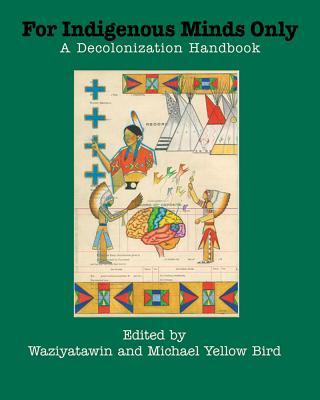For Indigenous Minds Only features Indigenous scholars, writers, and activists who have collaborated for the creation of a sequel to For Indigenous Eyes Only (SAR Press, 2005). The title reflects an understanding that decolonizing actions must begin in the mind, and that creative, consistent decolonized thinking shapes and empowers the brain, which in turn provides a major prime for positive change. Included in this book are discussions of global collapse, what to consider in returning to a land-based existence, demilitarization for imperial purposes and re-militarization for Indigenous purposes, survival strategies for tribal prisoners, moving beyond the nation-state model, a land-based educational model, personal decolonization, decolonization strategies for youth in custody, and decolonizing gender roles. As with For Indigenous Eyes Only, the authors do not intend to provide universal solutions for problems stemming from centuries of colonialism. Rather, they hope to facilitate and encourage critical thinking skills while offering recommendations for fostering community discussions and plans for purposeful community action. For Indigenous Minds Only will serve an important need within Indigenous communities for years to come.

For Indigenous Minds Only: A Decolonization Handbook
For Indigenous Minds Only features Indigenous scholars, writers, and activists who have collaborated for the creation of a sequel to For Indigenous Eyes Only (SAR Press, 2005). The title reflects an understanding that decolonizing actions must begin in the mind, and that creative, consistent decolonized thinking shapes and empowers the brain, which in turn provides a major prime for positive change. Included in this book are discussions of global collapse, what to consider in returning to a land-based existence, demilitarization for imperial purposes and re-militarization for Indigenous purposes, survival strategies for tribal prisoners, moving beyond the nation-state model, a land-based educational model, personal decolonization, decolonization strategies for youth in custody, and decolonizing gender roles. As with For Indigenous Eyes Only, the authors do not intend to provide universal solutions for problems stemming from centuries of colonialism. Rather, they hope to facilitate and encourage critical thinking skills while offering recommendations for fostering community discussions and plans for purposeful community action. For Indigenous Minds Only will serve an important need within Indigenous communities for years to come.